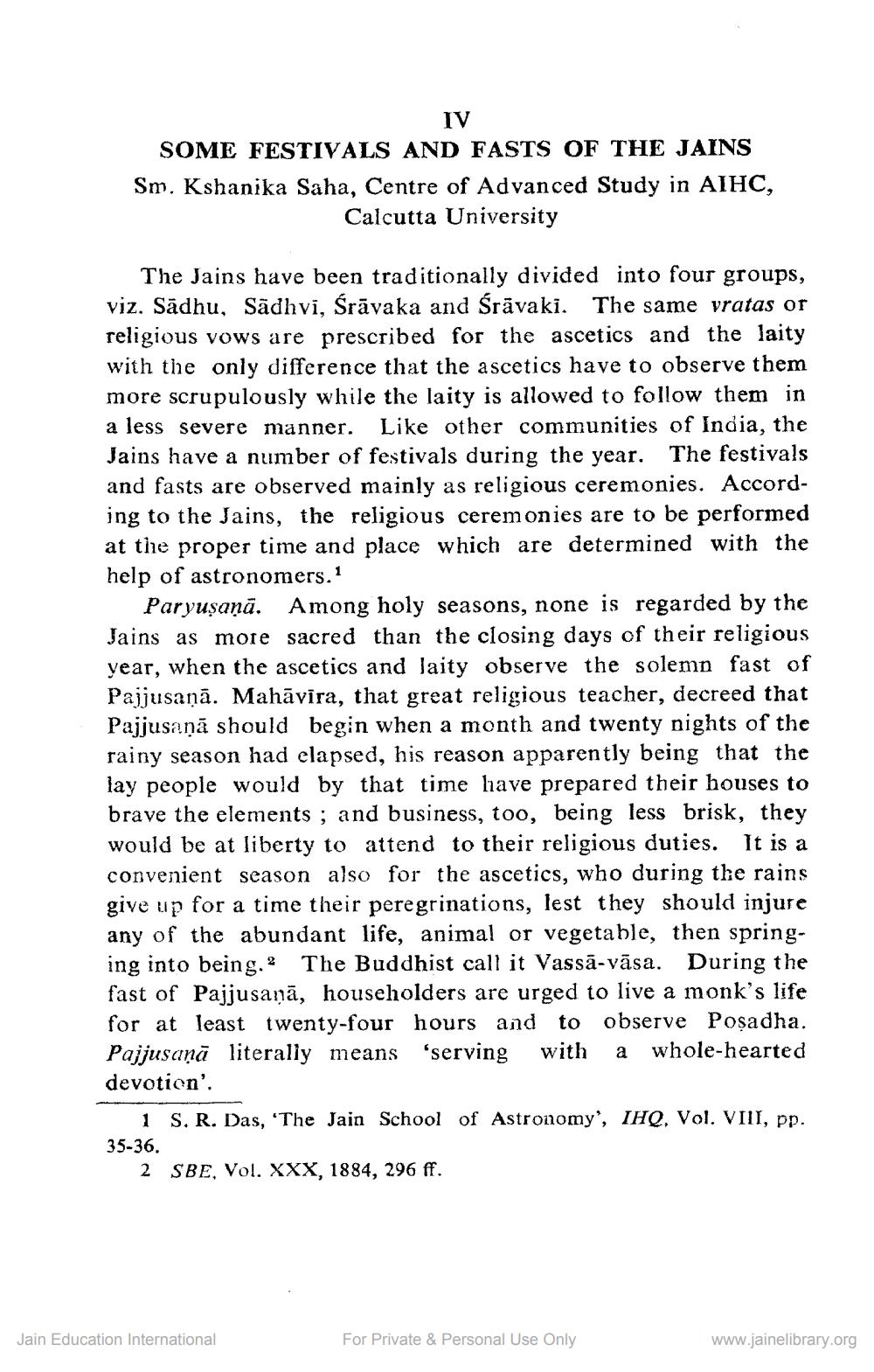________________
IV SOME FESTIVALS AND FASTS OF THE JAINS Sm. Kshanika Saha, Centre of Advanced Study in AIHC,
Calcutta University
The Jains have been traditionally divided into four groups, viz. Sādhu, Sadhvi, Śrāvaka and Śrāvaki. The same vratas or religious vows are prescribed for the ascetics and the laity with the only difference that the ascetics have to observe them more scrupulously while the laity is allowed to follow them in a less severe manner. Like other communities of India, the Jains have a number of festivals during the year. The festivals and fasts are observed mainly as religious ceremonies. According to the Jains, the religious ceremonies are to be performed at the proper time and place which are determined with the help of astronomers. 1
Paryusaņā. Among holy seasons, none is regarded by the Jains as more sacred than the closing days of their religious year, when the ascetics and laity observe the solemn fast of Pajjusaņā. Mahāvīra, that great religious teacher, decreed that Pajjusaņā should begin when a month and twenty nights of the rainy season had elapsed, his reason apparently being that the lay people would by that time have prepared their houses to brave the elements; and business, too, being less brisk, they would be at liberty to attend to their religious duties. It is a convenient season also for the ascetics, who during the rains give up for a time their peregrinations, lest they should injure any of the abundant life, animal or vegetable, then springing into being.” The Buddhist call it Vassā-vāsa. During the fast of Pajjusaņā, householders are urged to live a monk's life for at least twenty-four hours and to observe Posadha. Pajjusaņā literally means 'serving with a whole-hearted devotion'.
1 S. R. Das, 'The Jain School of Astronomy', IHQ. Vol. VIII, pp. 35-36.
2 SBE, Vol. XXX, 1884, 296 ff.
Jain Education International
For Private & Personal Use Only
www.jainelibrary.org




